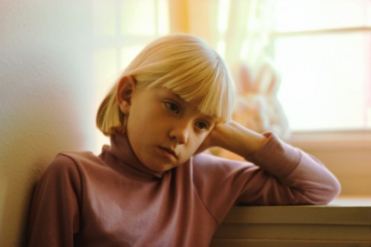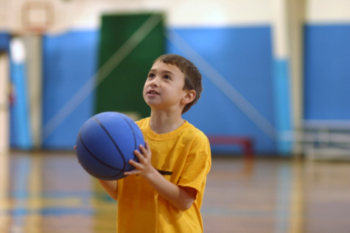Mood Disorder – Depression
Children who have mood disorders struggle with how they feel. There are many types of mood disorders. The most common mood disorders are depression (also known as uni-polar disorder) and bi-polar disorder. To learn about other types of mood disorders, please visit the birth to six section of this course.
A child with depression usually shows these symptoms almost every day:
- Experiencing feelings of extreme sadness even if there is no reason for the sadness (Fig. 1);
- Having very low energy or being very restless;
- Sleeping lots or not sleeping enough;
- Over-eating or not eating enough;
- Having no interest in anything or anyone;
- Failing to take pleasure in any activity, including activities that used to be pleasurable to the child before he or she became depressed;
- Appearing sad or uninterested in others;
- Younger children may seem irritable;
- Feeling very tired or exhausted, even without physical activity;
- Experiencing feelings of worthlessness (that is, they feel that they do not matter);
- Feeling hopeless and helpless;
- Having trouble concentrating on daily mental activities, such as solving a math problem;
- Speaking very slowly and in a somewhat monotonous tone (that is, without emotion);
- Being unable to make decisions;
- Having trouble remembering things;
- Spending a lot of time alone and avoiding friends;
- Being extremely sensitive and crying at the smallest things;
- Possibly feeling that life is not worth living, often thinking of death and dying and feeling suicidal.
Figure 1. Experiencing sadness
Many adults, adolescents and children feel sad and even very sad at some point in their lives. These feelings do not usually last very long. Also, some do feel very sad for a somewhat long period of time, but it is because there is a reason (for example, the death of a parent). Depression occurs when the child is very sad for a very long time (at least six weeks) for no apparent reason. The sadness is so severe and constant that it hurts the child’s ability to function well and go to school. The child’s sadness is usually not explained by sickness or a sad event.
Children who suffer from depression need psychotherapy to help them understand and cope with their emotions and feelings of low energy. Psycho-therapy should be provided by a licensed clinical psychologist or a psychiatrist who has experience working with children. In the beginning, the psycho-therapy sessions can be frequent. The most common type of psycho-therapy used with children who are depressed is cognitive-behavioral therapy (CBT) (see ECI Glossary). In CBT, children are taught to change how they think (the cognitive part) and how to change the behaviors associated with depression (the behavioral part).
Some children with severe depression could be placed on medication. It is believed that one of the causes for depression is an imbalance in the level of some neuro-transmitters (see ECI Glossary) in the brain. The issue of medicating children is a difficult one. Most research done on depression medication has focused on adults, not children. There can be serious side effects. For more information about intervention options for depression, please visit the birth to six portion of this course and scroll down to the bottom of the page.
Children with depression need help in the classroom. They will often have trouble staying on task and paying attention. They may find class and home work overwhelming. Sometimes they can be irritable and defiant. Most of them will not be on an Individual Education Plan (IEP) but they still need help. Here are a few things teachers who have a child with depression in their classroom can:
- Make sure the child feels welcome and safe in the classroom;
- Make changes to class material such as:
- Giving them more time to complete in-class assignments;
- Giving them more time to turn in home work;
- Giving them more time to complete tests;
- Giving them simple directions;
- Giving them outlines of lessons so it is easier for them to follow the day’s lesson;
- Make sure children are told that they are worthwhile:
- Finding out what the child is good at and making sure they engage in such activities;
- Giving the child frequent but sincere compliments;
- Drawing attention to the child’s skills and strengths;
- Encourage the child to engage in physical activities (Fig. 2) (if they are not moving enough);
- Encourage the child to eat healthy foods (if the child is over-eating) or make sure the child is eating (if the child is under-eating) (Fig. 3);
- Allow the child to go to the nurse’s station and take a nap (if the child suffers from lack of sleep);
- Collaborate with the school counselor who may have additional information on how to help a child with depression in a regular classroom.
Figure 2. Physical activity
Figure 3. Eating
Depression is a very serious disorder that can be a lifelong condition. Most children who get the right amount of psycho-therapy grow up to be happy and healthy adults. That is because good psychotherapy does not just deal with the child’s current symptoms. It also teaches the child how to cope with overwhelming feelings if they happen again.



0 comments
Kick things off by filling out the form below.
Leave a Comment